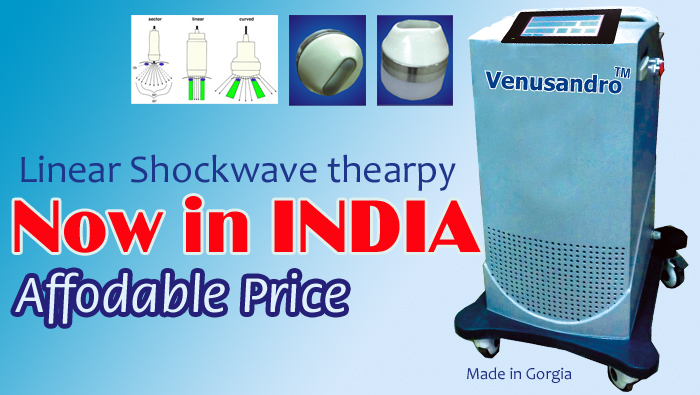Abstract
INTRODUCTION
Great advances in the understanding and treatment of erectile dysfunction (ED) have been made in the past two decades. Most patients suffering from ED respond to the available options for treatment, including oral phosphodiesterase type 5 inhibitors (PDE5i) and intracavernosal injections of vasodilating agents. However, these medications are unable to alter the underlying pathophysiology of the erectile mechanism. They are usually taken on demand, prior to the sexual act, and do not improve spontaneous erections [1]. Therefore, a need exists for an effective new treatment concept that would have a durable effect on spontaneous erectile function. Recently, a promising modality was introduced: the application of low-intensity extracorporeal shock wave therapy (LIST) on the penis [2].
Shock waves are acoustic waves that generate a pressure impulse and that carry energy when propagating through a medium. The degree of focus can be modulated noninvasively, resulting in variable concentration of energy at a desired location [3]. When shock waves are applied to an organ, the focused waves interact with the targeted deep tissues and act as transient micromechanical forces that initiate several biological changes [4]. Extracorporeal shock wave therapy has been clinically examined and applied in various medical fields. High-intensity shock wave therapy is used for lithotripsy because of its focused mechanical destructive nature. Medium-intensity shock waves have been shown to have anti-inflammatory properties and are used for treating a wide range of orthopedic conditions, such as nonunion fractures, tendonitis, and bursitis. Low-intensity shock waves probably have angiogenic properties and are used in the management of chronic wounds, peripheral neuropathy, and in cardiac ischemic tissue [1,2,5,6].
When LIST is applied to an organ, the relatively weak yet focused shock waves interact with the targeted deep tissues where they cause mechanical stress and microtrauma, also known as shear stress [3]. This shear force then triggers a chain of events that cause the release of angiogenic factors inducing neovascularization of the affected tissues and enhancing the blood flow. Extrapolation of these findings to ED has led to the assumption that if applied to the corpora cavernosa, LIST could improve penile blood flow and endothelial function by stimulating angiogenesis in the penis [7]. This review summarizes the effect of LIST on erectile tissue as well as the clinical evidence of its effect in patients with vasculogenic ED.
POTENTIAL MECHANISM OF SHOCK WAVE THERAPY
Research on the biological changes that result from LIST has mainly been focused on angiogenesis and local neovascularization. More than a decade ago, Wang et al. [8] revealed that LIST stimulates the expression of angiogenesis-related growth factors, such as endothelial nitric oxide synthase (NOS), vascular endothelial growth factor (VEGF), and endothelial cell proliferation factors, e.g., proliferating cell nuclear antigen (PCNA). This group also reported that LIST induces neovascularization and cell proliferation. This effect is evident 4 weeks after treatment and persists for more than 12 weeks [8]. Moreover, previous studies on transgenic mice revealed an up-regulation of VEGF receptor 2, which is considered a primary mediator of angiogenic signaling. Quantitative immuno-histological studies evaluating ischemic tissue vessel formation showed higher vessel densities in the shock wave-treated groups [6,9,10,11,12].
In recent years, LIST has also been studied in regard to its effect on stem cell recruitment in tissue repair. Stem cells and progenitor cells have the ability to divide and differentiate into specialized cell types. Their key role in the neovascularization of ischemic tissues was widely studied in recent years [13]. One example is the circulating progenitor cells (CPCs). During acute ischemia, the release of chemoattractant factors (i.e., VEGF) acts as a homing factor for CPCs that may contribute to the ongoing endothelial repair [14]. Aicher et al. [5] investigated the effect of LIST on the homing of infused human CPCs in rats with chronic hind limb ischemia. In their study, LIST-treated ischemic muscles attracted significantly more labeled CPCs than did the untreated muscles. The treatment significantly increased the blood flow in the ischemic muscles. Nishida et al. [6] studied LIST in a porcine model of ischemia-induced myocardial dysfunction and found that LIST significantly up-regulated VEGF expression in ischemic myocardium and improved regional myocardial blood flow and left ventricular ejection fraction. Further studies have also demonstrated beneficial effects of LIST on left ventricle remodeling in pigs with experimentally induced myocardial infarction [15] and myocardial ischemia-reperfusion injury [16].
|






